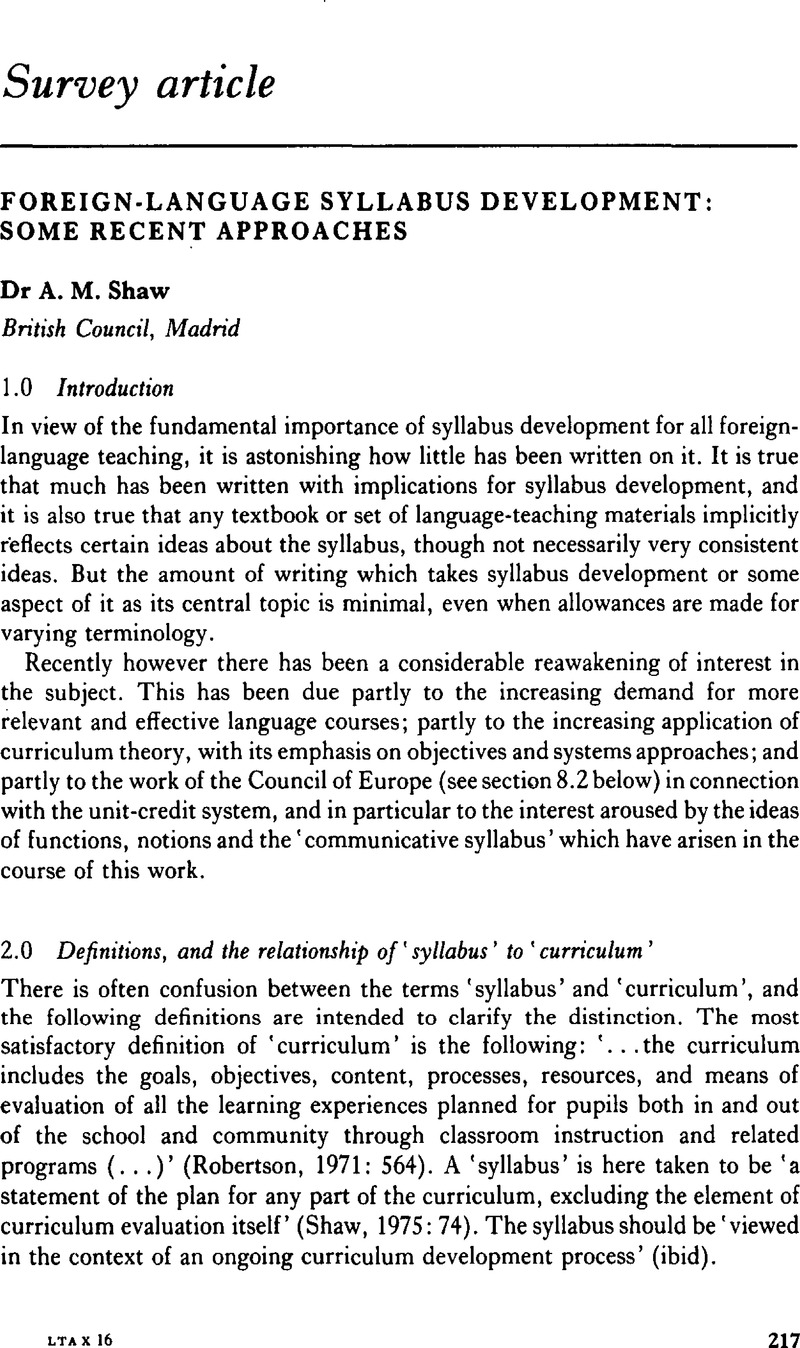Crossref Citations
This article has been cited by the following publications. This list is generated based on data provided by Crossref.
Brumfit, Christopher J.
1980.
From Defining to Designing: Communicative Specifications versus Communicative Methodology in Foreign Language Teaching.
Studies in Second Language Acquisition,
Vol. 3,
Issue. 1,
p.
1.
Ulijn, Jan
1980.
Foreign language reading research: recent trends and future propects.
Journal of Research in Reading,
Vol. 3,
Issue. 1,
p.
17.
Breen, Michael P.
1987.
Contemporary Paradigms in Syllabus Design. Part I.
Language Teaching,
Vol. 20,
Issue. 2,
p.
81.
1991.
Languages in School and Society.
p.
129.
이흥수
2011.
Models of English Language Learning and Teaching in Secondary School Textbook.
English21,
Vol. 24,
Issue. 2,
p.
161.
Kim,Jeong-ryeol
and
박선영
2012.
A Development of Situation-Based Multi-Syllabus for Communicative English Learning in Elementary School.
Korean Journal of Elementary Education,
Vol. 23,
Issue. 4,
p.
263.



